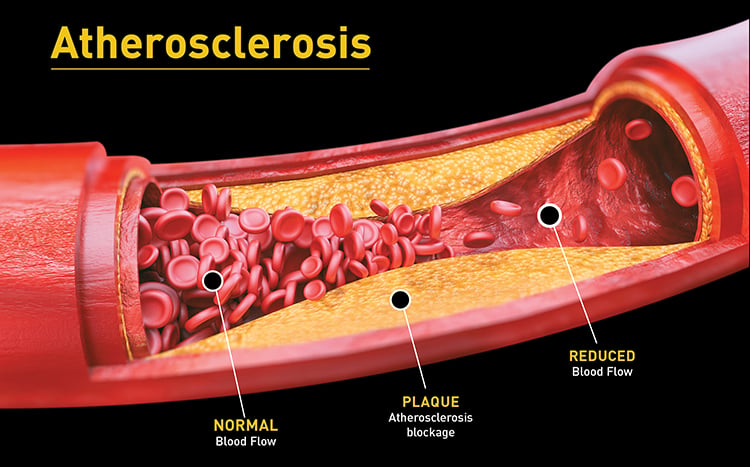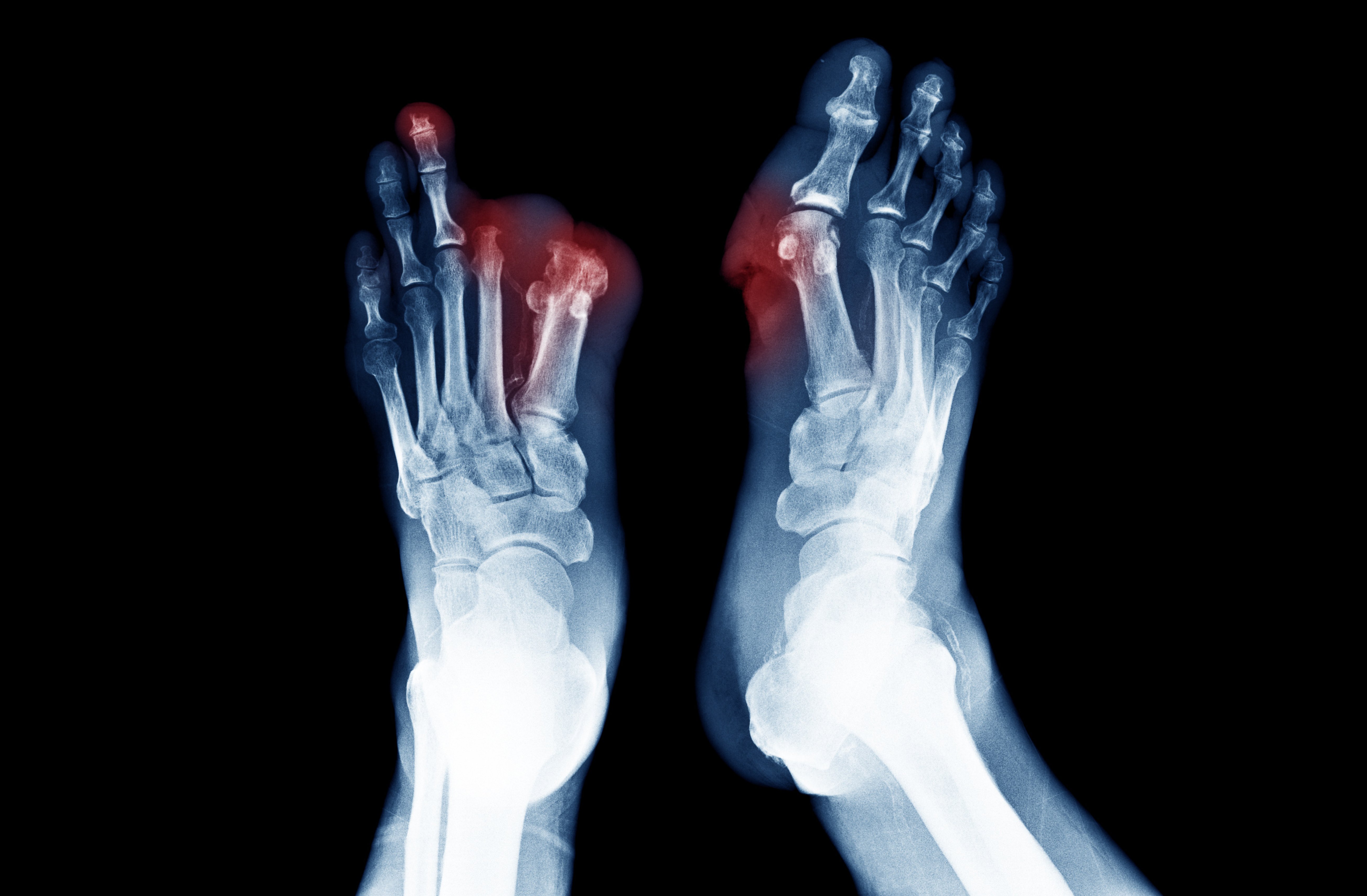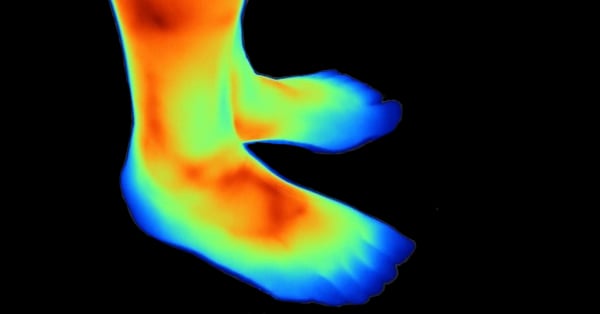Topics: Peripheral Artery Disease, Atherosclerosis, erectile dysfunction

It’s not in your head, it’s in your vascular bed.
Until the 1980s, most doctors would have told you that erectile dysfunction (ED) was all in your head.1 But thanks to Welsh miners, we now understand that it is actually a sign of Peripheral Artery Disease (PAD). (Read more about how Viagra was discovered below.)
How are Erectile Dysfunction and Peripheral Artery Disease related?
It’s all about blood flow. Erectile dysfunction or impotence, is defined as the inability to get and keep an erection firm enough for sex. The problem of getting or keeping an erection is a sign of decreased blood flow caused by an underlying health condition like heart disease and Peripheral Artery Disease.
Blocked arteries due to plaque can be a cause for the decreased blood flow that leads to ED. Doctors call it “atherosclerosis,” which describes the hardening of the arteries due to plaque buildup.
 Atherosclerosis, is the primary cause of Coronary Artery Disease, Peripheral Artery Disease, and is a “systemic” problem affecting your body’s vascular bed. Systemic means it is related to your “system” and in this case, it refers to your cardiovascular system. If you’ve been diagnosed with blockage in one artery, you probably have some atherosclerotic plaque in other arteries as well.
Atherosclerosis, is the primary cause of Coronary Artery Disease, Peripheral Artery Disease, and is a “systemic” problem affecting your body’s vascular bed. Systemic means it is related to your “system” and in this case, it refers to your cardiovascular system. If you’ve been diagnosed with blockage in one artery, you probably have some atherosclerotic plaque in other arteries as well.
What conditions are related to Erectile Dysfunction and Peripheral Artery Disease?
Many health conditions are linked to vascular disease and clogged arteries. Just a few of these conditions include:
- Coronary artery disease (clogged arteries in the heart)
- High blood pressure
- Diabetes
- High cholesterol
- Obesity
- Peripheral artery disease
If you have one or more of these conditions, it's more likely that atherosclerosis can affect the blood vessels related to erectile dysfunction.

Risk Factors for Peripheral Artery Disease
There are numerous risk factors for erectile dysfunction including smoking, high blood pressure, diabetes, and obesity, all of which happen to be the main risk factors for Peripheral Artery Disease as well.
Additionally, smoking greatly increases your chances of having clogged arteries and PAD. In fact, smoking is responsible for approximately 75% of all Peripheral Artery Disease cases.3
Peripheral Artery Disease and Plaque Buildup
Like erectile dysfunction, Peripheral Artery Disease is caused by the buildup of plaque in the arteries.
In men referred for stress testing, erectile dysfunction is an independent predictor of PAD as determined by screening ABI examination. Also, increased severity of ED is associated with an increased prevalence of PAD.4
If I have ED, what do I need to know about PAD?
Research shows that more than 50% of men between 40 and 70 years old will experience moderate to severe erectile dysfunction.5,6 While many conditions are associated with erectile dysfunction, the most common is Peripheral Arterial Disease (PAD).
Peripheral Artery Disease can be a progressive disease. Similar to heart disease, PAD cannot be cured. However, medical treatment and a healthy lifestyle can help improve blood flow and keep the disease from getting worse.
Signs and Symptoms of PAD
Symptoms of PAD are often dismissed as normal sign of aging. These signs and symptoms of PAD include:
- Painful cramping in your hip, thigh or calf muscles after walking or climbing stairs
- Leg numbness or weakness
- Coldness in your lower leg or foot, especially when compared to the other leg
- Sores on your toes, feet or legs that will not heal (especially a black/discolored toe)
- A change in the color of your legs
- Hair loss on your feet and legs
What if you are having no leg pain?
One study evaluating men with erectile dysfunction found that 66% of the patients with PAD reported having no lower extremity symptoms.4 A lack of symptoms can be similar to a cardiac patient prior to having a heart attack because the reduced blood flow is there but an event has not happened yet.
For diabetics, a lack of leg pain could be due to peripheral neuropathy. The first signs or symptoms of PAD may be non-healing ulcer or gangrene.
Minimally invasive procedure to remove blockage
If you are experiencing symptoms of Peripheral Artery Disease, it is important to have the blockage removed from the artery so a healthy blood flow can be reestablished. Today, there is an incredible technology available that allows your doctor to see inside your arteries and precisely remove plaque. This procedure is called a Lumivascular atherectomy. To find a doctor, click here.
So how was Viagra discovered?
In 1989, Pfizer scientists were working on a drug that they believed would be useful in treating high blood pressure and chest pain associated with coronary heart disease.
While conducting a clinical study on miners in South Wales, the researched asked an open-ended question: Is there anything else you noticed you want to report? One of the men put up his hand and said, “Well, I seemed to have more erections during the night than normal,” and all the others kind of smiled and said, “So did we.”7
At the end of the week, the researchers had to get any unused drugs back from the miners. When some of miners refused to give the drugs back, the researchers knew they had a major discovery on their hands.
Research into Erectile Dysfunction and Peripheral Artery Disease
These Welsh miners helped the medical community establish a link between impotence and atherosclerosis, creating a whole new disease category called erectile dysfunction (ED). Since then, clinical research has continued to study ED leading to deeper understanding of its connections to peripheral artery disease. Today, many doctors use ED as an early indicator for Peripheral Artery Disease and uses that information to help treat patients who are at risk.9
Take action:
If you suffer from ED and are experiencing the signs and symptoms of Peripheral Artery Disease in your legs, please click here to find a Lumivascular atherectomy physician in your area.
Conclusion:
- Erectile dysfunction is a sign of Peripheral Artery Disease.
- The underlying cause is atherosclerosis, a “systemic” problem affecting your whole body’s cardiovascular system.
- Atherosclerosis is the hardening of the arteries due to plaque buildup.
- Plaque buildup can block blood flow peripheral arteries in the legs and feet and cause erectile dysfunction.
- Peripheral Artery Disease is a progressive disease.
- Peripheral Artery Disease causes leg pain but can cause no symptoms at all leaving many at risk.
- If left untreated, PAD can lead to leg pain, non-healing sores and the risk of amputation.
- A Lumivacular artherectomy allows your doctor to see inside your artery to precisely remove plaque while protecting you from vessel injury.

Take action:
- Learn more about Lumivascular atherectomy
- Find a Lumivascular Doctor in your area
If you have found this article helpful, please don’t forget to share!
References:
- Sullivan, et al. Vascular risk factors and erectile dysfunction. BJU International. 2001; 87:838-845
- Chew, et al. Erectile dysfunction in general medicine practice: prevalence and clinical correlates. Int J Impot Res. 2000 Feb;12(1):41-5.
- Lu, et al. The Relationship of Cigarette Smoking to Peripheral Arterial Disease. Rev Cardiovasc Med. 2004;5(4):189-193
- Polonsky, et al. The association between erectile dysfunction and peripheral arterial disease as determined by screening ankle-brachial index testing. Atherosclerosis. 2009 Dec;207(2):440-4.
- Feldman, et al . Impotence and its medical and psychosocial correlates: results of the Massachusetts Male Aging Study. J Urol 1994;151:54–61.
- Bacon, et al. Sexual Function in Men Older Than 50 Years of Age: Results from the Health Professionals Follow-up Study. Ann Intern Med. 2003;139(3):161-168.
- Tozzi, et al. (2017, Dec 11) The Little Blue Pill: An Oral History of Viagra. Retrieved from: https://www.bloomberg.com/news/features/2017-12-11/the-little-blue-pill-an-oral-history-of-viagra
- Curtis, B. (2014, Sept. 26). Welsh History Month. Retrieved from: https://www.walesonline.co.uk/lifestyle/nostalgia/welsh-history-month-coal-miners-7836796
- Blumentals, et al. Is erectile dysfunction predictive of peripheral vascular disease? Aging Male. 2003 Dec;6(4):217-21.







